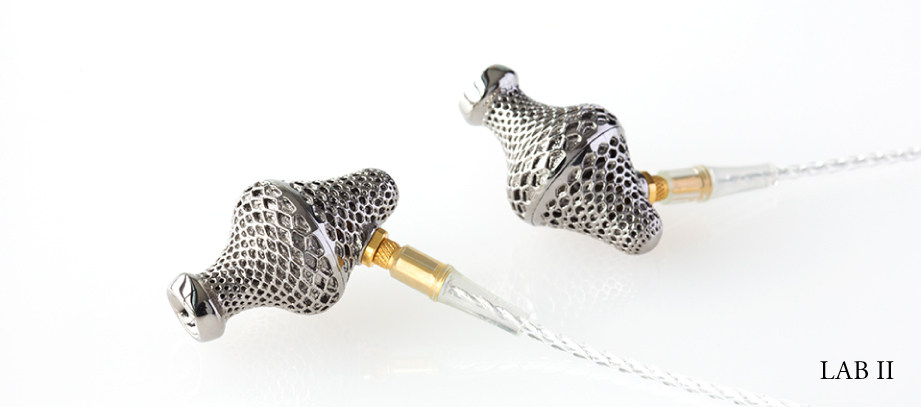Announcing new lineup of earphones – LABII

Japanese audio manufacturer S’NEXT (CEO Mitsuru Hosoo) will release LAB II, the second product in its house brand final’s LAB (laboratory) series which follows the concept of “creating things never seen before”, on October 22.
-
Features
- A titanium housing that can only be created using 3D printer molding, achieved through the pursuit of ideal sound
- Mechanical equalizer integrated housing that improves high frequency characteristics
- Double-layered fully open mesh form with a high aperture ratio that contributes to necessary and sufficient bass tones and to the spread of the sound stage
- Newly developed 15mm diameter dynamic driver unit
- A surface finish that currently ranks as one of the smoothest in the world for titanium forms shaped by 3D printers
- Employs an MMCX connector and a silver-coated cable
- Manufactured at our head office in Kawasaki
- Comes with a brass carry case
-
Product page
- http://snext-final.com/en/products/detail/LABII.html
-
LAB II is a set of earphones with a form that can only be created using a 3D printer; achieving a vast sound stage like never before, they facilitate a sound experience on a different dimension that will surprise everyone. These earphones were achieved with the cooperation of NTT Data Engineering Systems, a company with a great deal of skill and know-how regarding 3D printer metal molding. In our pursuit of ideal sound, they have been given a special, extremely difficult to create form; as such, only 200 pairs will be released worldwide.
Using an open, large diameter dynamic driver unit makes it difficult to extend the frequency ranges of both low and high frequencies, and there was a limit to bandwidth, but with LAB II, by molding the mechanical equalizer using a 3D printer, a form impossible to create using manufacturing methods up until now was achieved, and high frequency characteristics were improved. The back is fully open; with the sound conduit on the front aspect preventing interference from the front and back of the diaphragm, low frequency characteristics were also improved. With the mesh form applied to the external aspect of the housing, a very small space between the audio canal and the housing, which allows for a natural sound stage with no sense of stagnation, was created. This special form arrived at in the pursuit of sound has been achieved through 3D printer molding. Metal forms molded using a 3D printer are not favorable in terms of smoothness, and this proves to be a stumbling block when making a product. We developed a new chemical treatment method and achieved a high gloss. For titanium forms shaped by 3D printers, it ranks as one of the smoothest in the world.